Of stories from tidal villages by a vanishing forest and a fast-rising sea
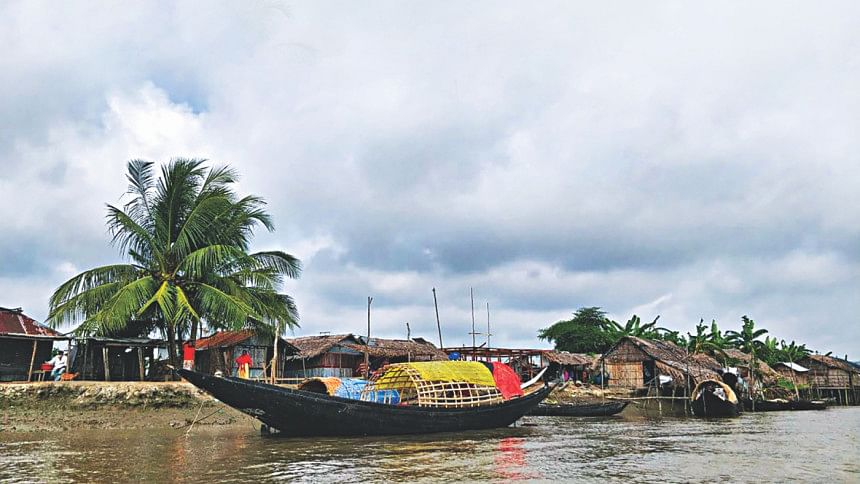
Maybe it was Anita Desai's book The Village by the Sea or was it that movie My Japanese Wife—I do not remember so clearly now—that had us all riled up during that short four-day long journey down to the last villages of the Sundarbans.
Monsoon had just hit the land of Bengal—this was nearly four years back—when four of us boarded a small microbus from Dhaka city en route Khulna and then on to Rainda. With bags full of posters and placards for raising awareness against the hunting of an endangered bird, the Masked Finfoot, we set off.
As the cityscape changed from towering concrete buildings to multi-coloured one-storied buildings plastered with advertisements of long-forgotten products—Uro cola, RC cola, Pocha soap etc—we could sense the variation in the species composition of the landscape as well. Bigger buildings and dusty pathways gave way to small stores and eventually tin-shed buildings slowly giving way to greener pastures. Homestead forests—tall supari trees, short stocky babla trees, mango and jamrul trees, small and big ponds and a range of domesticated and wild species of birds—covered both sides of the highway past Khulna.
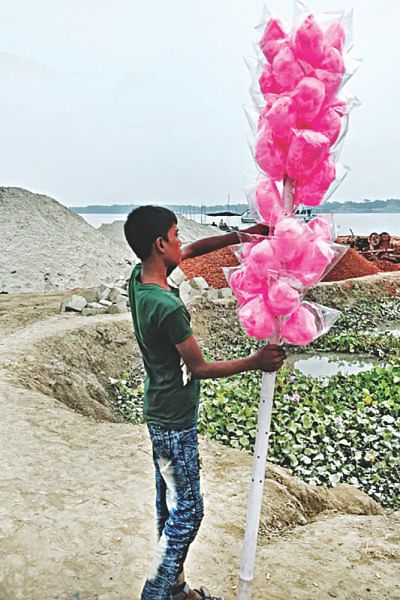
It was late afternoon by the time we made it over to the small ghat perched on the banks of Balaswar River. A tiny yellow ferry, with just enough space to hold the one car and two or three motorcycles, ferried passengers, goods and everything in-between both banks. We left our microbus and crossed the ferry on foot.
While I have visited villages in the Sundarbans before, this would be my first stay in one such village. It is difficult to describe the landscape and be pragmatic at the same time. It is at once beautiful and devastating. This particular village—Rayenda—was just a few kilometres from the Sundarbans but the forest and the village are connected by one fine invisible thread. The vegetation is unique—from the lush green to shrubs and even cactuses line the boundaries of most houses—and the air too feels heavy with salt. We hired a van fitted with an old engine from a boat, another usual mode of transport in these areas, to take us from the ferry ghat to the main Bazaar of Rayenda.
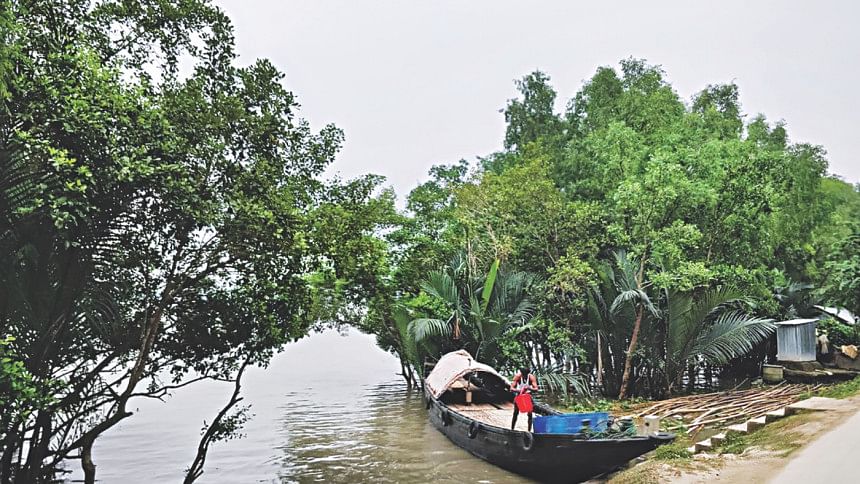
We stayed in one of the few four-storey building complex/NGO training centre/cyclone shelter/office in the bazaar during our few days there. From my window, I had viewing access to bits and pieces of the village. A school could be seen in the distance, also used as a makeshift cyclone shelter. Everything slowed here during the monsoon—the season during which we were visiting. Rains meant most fishermen were home and the rice fields—the few that were arable in the area—were also oddly devoid of any activity. This is because most people had opted to either change to shrimping from rice farming or fishing in the Sundarbans, thanks to rising seas resulting in salinity intrusion from the downstream. There is an onslaught from the upstream too. Construction of dams in the upstream restricts flow of freshwater into the rivers of the Sundarbans, especially on the Indian side. It was almost evening on day one before we could manage to get out for a stroll after the incessant rain ceased for a short few hours. Bigger than most village bazars, the main square was abuzz with mostly men. We walked and walked through the streets of the bazaar, dodging people, breathing in the smells of 'peyaju' and incense. And sometime that evening we took a tomtom and moved further down from this main town and asked our 'mama' to take us deeper into the villages, into those parts of the country where the men of the jungle came for their nightly stroll, for their weekly stopovers. And 'mama' obliged readily. Up and down a thousand narrow bridges barely hanging on to the edges, over green and grey rivers, we all went. And the farther in we went, the quieter the night became, the greener and more menacing the surroundings.
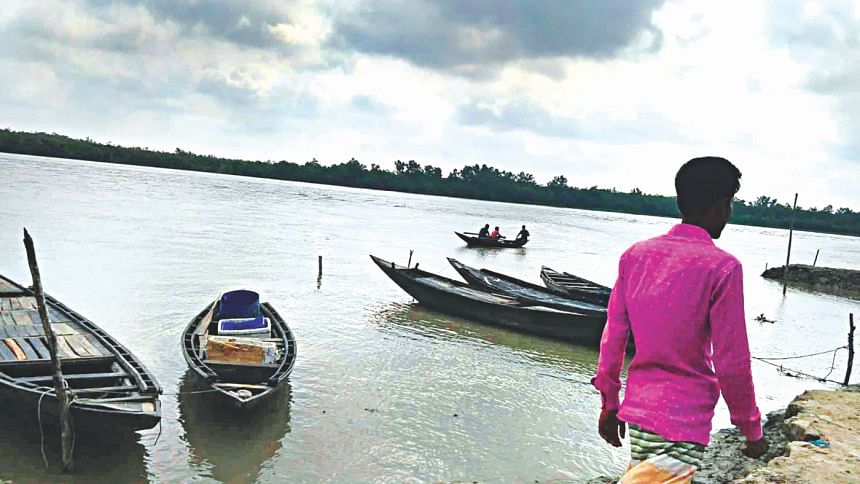
Until one more bridge and we were plunged into a strange night market. The only lights illuminating the night were the golden kerosene lamps. And again, we walked through alleys looking for a spot to put up our posters and talk to the fishermen about this elusive bird of ours. It took a good few many paan, biris and cigarettes to get the ball rolling and soon conversations started to flow.
The men told us of the forest by the village. Of the long days and nights inside the forest and of their many encounters with pirates. They talked about sightings of great beasts and not just the masked finfoot. They talked about the crocodiles lurking below the murky grey waters or sometimes lying in plain sight, basking under the mirage of a yellow sun.
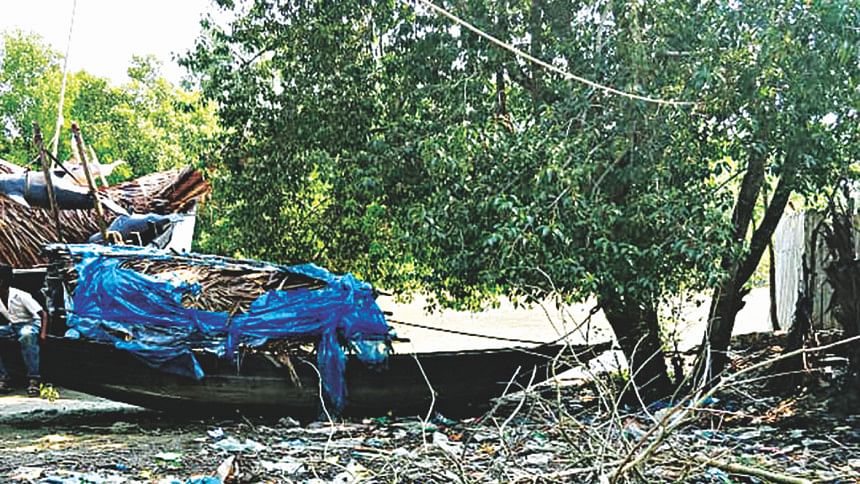
They talked about ghosts and dead bodies floating in the river, cast off on a 'bhela' with the hope that Manasa Devi will revive the person. They talked about encounters with tigresses and her cubs on the beaches of Kotka and of being lost in a continuous loop inside the creeks of the mangrove.
Those few days in that village, went by in a strange blur of somewhat fantastical stories—at once real and unreal. Moving from bazar to bazar, talking to men after men and collecting their big and little stories of the vanishing forest. This network of creeks, trees and tangled roots, which has shaped the lives of these communities who have set up home here for hundreds of years, was fast degrading.
Over the years, I made more pit stops in these villages on the way to the Sundarbans. And each year, they crept a little bit further forwards into the forest. And each time to my naked eye the forest appeared thinner and the banks broke off more sharply into the raging river.
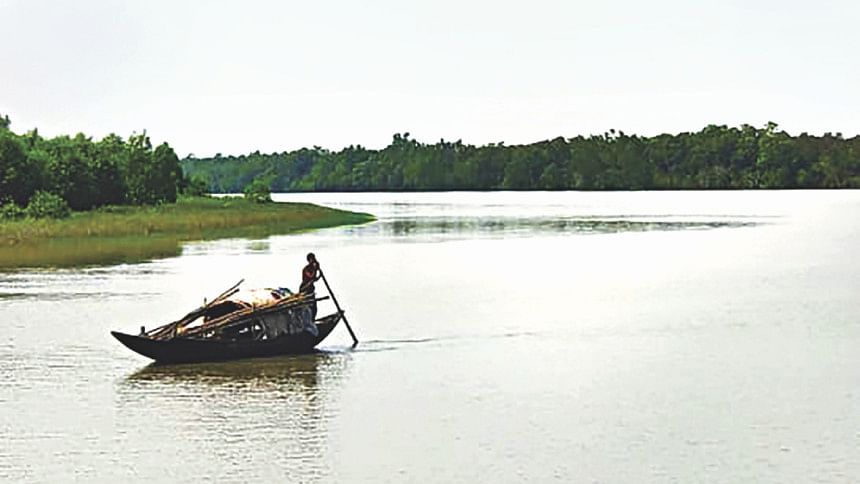
By the time I would have another chance to visit the forest and its nearby villages again, four years had gone by.
We picked winter to visit this time. Yet another conservation awareness programme, another set of people, a new set of places but all subject to the same onslaught of climate change, development pressures, rapid industrialisation, and pollution.
On a cold November afternoon, we started on a boat from the ghats of Khulna. We made our way all the way up and down the riverways, crossing Dhangmari, Chandpai, Karamjal, Lawdobe and a few other places in between. During the nights we would dock just inside the forest and in the mornings, we would row the boat onto villages standing just on the edge. With land becoming more and more precarious, people were making houses on little strips of land strengthened by wooden logs driven into the banks. The view of a wall of tangled roots and sundari trees that would once greet you as you stood on the banks of the rivers had been completely erased. In its place, tall, grey and menacing building complexes stood. They billowed out smoke and dust into the bleak, grey sky—like the cover of Pink Floyd's Animals.
As we walked through these places, just how much had transformed over the years became more and more visible. Kerosene lamps were replaced by solar-powered light bulbs, newly paved roads meant packaged products came to the farthest corners now. The resulting plastic waste was strewn about the villages, discarded on the doorsteps of where it was consumed. So, the next time you see a bird's nest inside the forest covered in a packet of potato crackers, do not be surprised.
The magic of the Sundarbans is in its dynamic nature and how it changes so much so quickly. It is also in its resilience and how its presence has ensured lives managed to thrive on its periphery. But as industries replace the towering golpata trees, the temporariness of the Sundarbans glares at us straight in the eye. Every year that we allow rampant exploitation to continue, we put more of the forest at stake, more of its people and more of its wildlife at risk.
On those final days in the forest, I watched women walk miles and miles, past the newly constructed but useless tube wells to collect some drinkable water. I watched boats snake in and out of the forest. I saw huge factories churning and grunting while weather-beaten men counted their day's catch once back at shore. And I watched the day close in on this constantly changing land remembering the words of one the most perceptive authors of our times, Pico Iyer: Hold this moment forever, I tell myself; it may never come again.

 For all latest news, follow The Daily Star's Google News channel.
For all latest news, follow The Daily Star's Google News channel. 



Comments